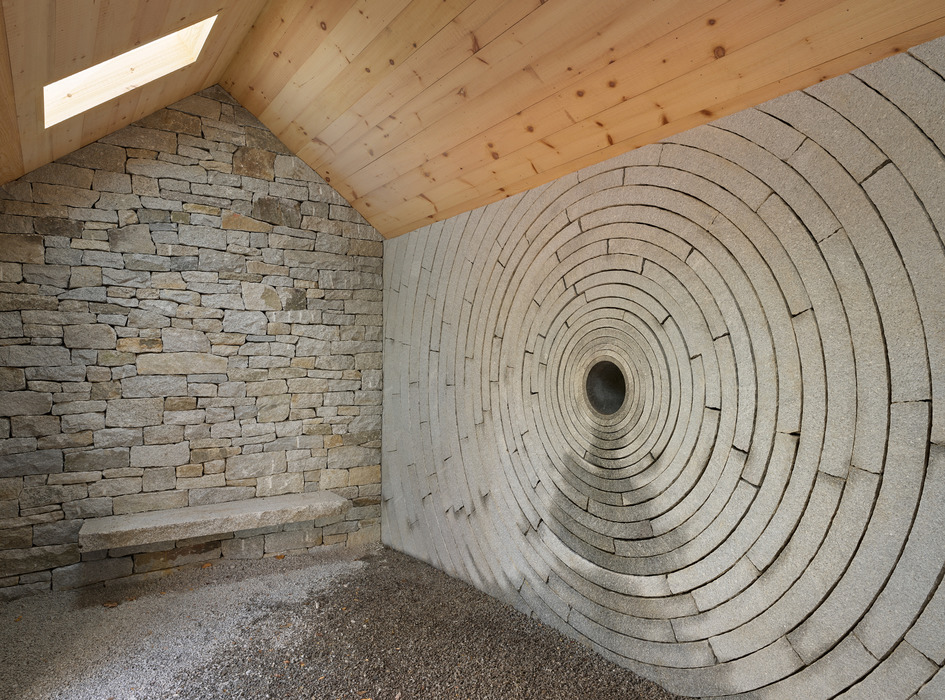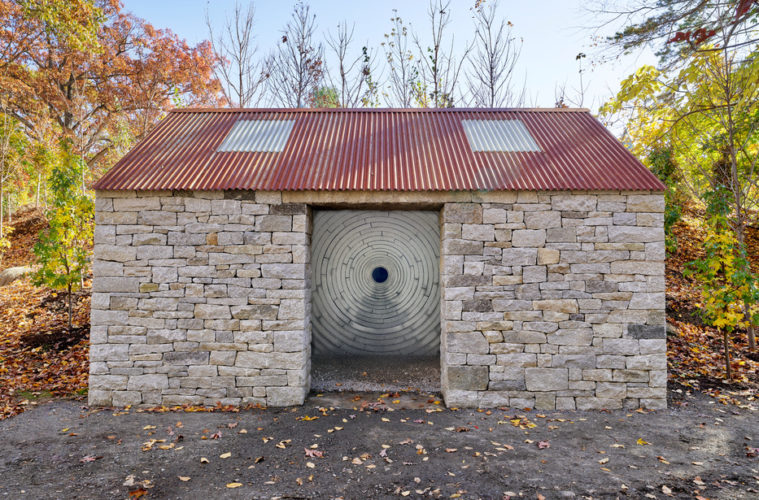At first glance, the newest installation at deCordova Sculpture Park and Museum in Lincoln is unassuming, even unremarkable. The stone shed, embedded into the slope of a hill overlooking the pastorally pretty Flint’s Pond, might be one of thousands of such utilitarian structures dotting the New England landscape, with its sturdy, locally quarried granite walls and spruce pine ceiling.
But one look inside is all you need to tell you that this shed is anything but ordinary. The piece, Watershed, is a site-specific, permanent work that interacts with deCordova’s natural outdoor environment and the flow of water, both seen and unseen. With the opening of Watershed, deCordova has become the only institution in New England with a publically accessible installation by the renowned British artist Andy Goldsworthy.
Inside the nineteen-by-fifteen-foot stone structure, viewers will find that its rear wall is made up of mesmerizing, hand-trimmed granite stonework that’s intricately puzzle-pieced together in concentric circles radiating outward from a central drain outlet. When it rains, water that flows across deCordova’s parking lot will channel through the drain and into the shed itself, showcasing the usually hidden power and presence of groundwater.
The stonework’s concentric circles echo water’s movement, and as time passes, the water that flows through the drain will shape and reshape the sculpture itself, leaving behind moss, mineral deposits, and patina that are visible even when the drain is dry, reminding viewers that water is both permanent and impermanent. Even the installation’s name, Watershed, reflects this duality.
Stone benches and skylights inside the shed encourage quiet reflection, while its steel roof heightens the sound of pounding rain. In addition, Watershed is accessible to people of all abilities, thanks to a gently graded accessible path through the woods leading to the site.
Goldsworthy’s art has been featured at dozens of locations around the world, from the the National Gallery of Art in Washington, D.C., to the Tate in London, to the Setagaya Art Museum in Tokyo. According to deCordova’s senior curator Sarah Montross, Goldsworthy’s work often isn’t overtly placed or bombastic, and instead seeks to draw the viewer’s attention to the often hidden elements of nature that are all around us.
“He really wants to capture its power and its strength,” Montross said. “He talks about how art has the remarkable ability to show you what’s there.”
Watershed will highlight nature’s power, beauty, permanence, and ephemeralness for visitors as it’s shaped and changed by the water that runs through it.
“There’s no work more prone to the unpredictability of weather than Watershed,” Goldsworthy said. “It will root itself in the place.”
For more information, visit decordova.org.


